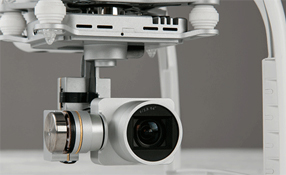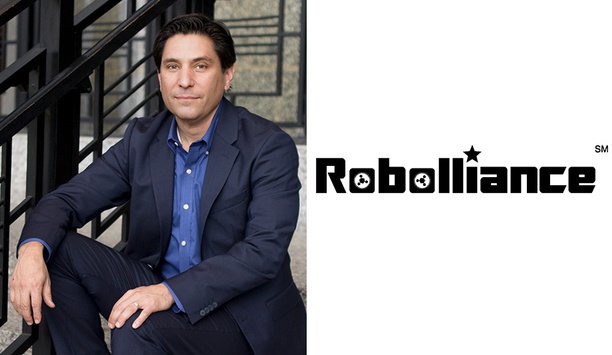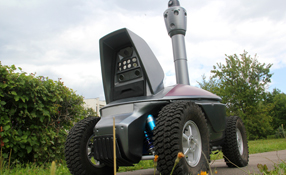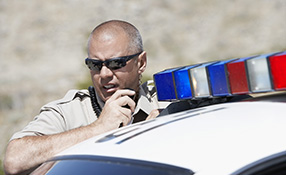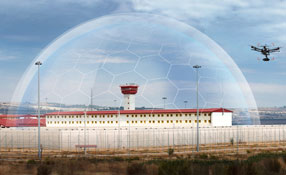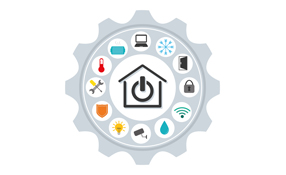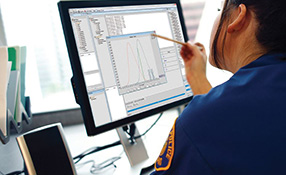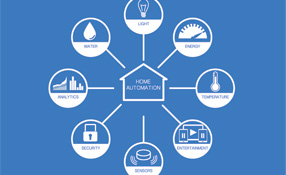Part 2 Of Our Robots In Security Series |
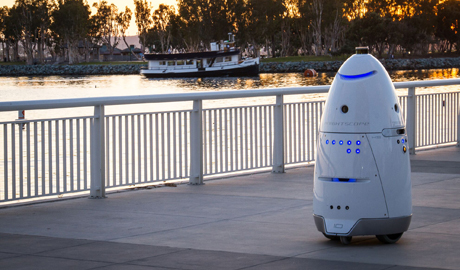 |
| Companies realized they could improve security by mounting laser sensors and cameras on a mobile platform such as Knightscope's Autonomous Data Machines |
Security and safety robotics, unlike any other industry, is driven by customer and market demand. Once buyers acquire robots, they often find new things they want them to do. Manufacturers are then called upon to respond to those demands, and they often do.
Enhancing Security
The real demand for robots came about when companies realized they could improve security and safety by mounting laser sensors and cameras on a mobile platform. GPS and a laser ranging instrument enable robots to find their way around a patrol area and avoid obstacles. Computer technology has improved to the point that data sent from robots could determine when something was out of order – such as a hole in a fence or an object or person in a place they shouldn’t be.
Now that robots are becoming available, the task they perform will no doubt continue to increase. Robots started by patrolling perimeters and large open areas such as parking lots. Now, companies such as Knightscope are developing robots that can also move around inside buildings. Their sensors enable them to avoid obstacles, including people.
Robots Replacing Security Guards
Robots will replace security |
These robots will continue to replace the security guards monitoring areas through CCTV. The robots will do the monitoring and then call the guards when they detect a breach in security. That may mean fewer guards, but more personnel doing higher-levels tasks.
“It’s not that they don’t like manpower, it’s hard to find people who want to stare at a perimeter for hours a day,” says Stewart Dewar, Product Manager at Senstar Corporation. “Actually people are not all that good at doing routine stuff.”
RoboGuard Surveillance Robot
The company’s RoboGuard™ is an agile surveillance robot riding on a monorail that constantly patrols along a secured perimeter. It can promptly respond to a suspected intrusion through one of Senstar’s perimeter intrusion detection system (PIDS) sensors.
Robots are also likely to take on more functions for public safety. The Dallas Police Department’s recent use of a robot with an explosive device to kill a sniper was a unique – and probably rare – use of the technology.
“The robots weren’t designed for this purpose,” admits Sean Bielat, CEO of Endeavor Robotics, the nation’s biggest maker of military and police robots. “If our customers were to come to us and say we really need a solution that would help us deal with a person in a barricaded situation then we could probably come up with something that made more sense than deploying an explosive device,” adds Bielat. “Perhaps we’d use non-lethal technology.”
Rather than an explosive that killed the sniper and destroyed the robot, it could be equipped with Tasers or other “less than lethal” devices.
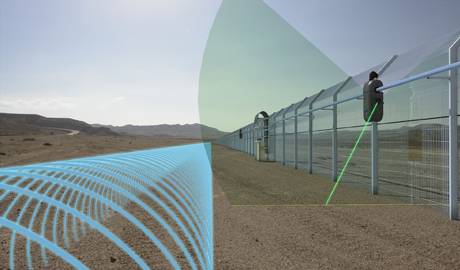 |
| RoboGuard is an agile surveillance robot riding on a monorail that constantly patrols along a secured perimeter |
Future Role Of Robots To Enhance Security
Robots also offer police and even the military the option of being able to “shoot second” in a confrontation with a suspect or enemy combatant. Unlike a SWAT team, a properly equipped robot could roll into a situation without the need to shoot at the first sign of danger. Equipped with two-way microphones, a driver could then negotiate with a shooter and perhaps avoid the necessity of lethal force, according to Bielat.
“Right now that’s all speculative,” he explains. “Right now robots are not being used that way. There are no programs in place to arm robots or to have them be used in direct combat roles. All the programs of records that are coming down are to use robots to either continue the counter IED fight or to put on additional sensors and capabilities to create situational awareness for different communities.”
The Marine Corps is already |
The military has been using ground-based robots for decades, but never in the role of a platform to deliver firepower against the enemy. Their roles have been confined to bomb disposal and reconnaissance and surveillance and the detection of chemical, biological and radiological threats.
“Infantry has yet to field robots widely,” says Bielat. “So the troops in those situations just don’t even have robots. I could see (robots) being used as a form of force escalation. You could escalate the response and potentially reduce causalities across the battle space – not just friendly, but enemy as well – by using robots to decrease the lethality required in a given situation.”
Limited Use Of Military Robots
Warrior robots have yet to make their way into the tactics and strategy of the U.S. Army. Yet, experts say it’s only a matter of time before these machines are given new roles such as providing greater firepower to the troops.
“There aren’t really tactics, techniques and procedures or TTPs that support using robots in that way,” explains Bielat. “That’s just not how our military trains to use robots and robotics technology.”
He does expect the young men deploying these machines to take the next step and adapt their own – even before the Generals and Commanders formulate specific policies for their use.
The Marine Corps is already testing a tracked robot outfitted with sensors and cameras and armed with an M240 machine gun. Known as the Modular Advanced Armed Robotic System, it has gone on training patrols at Camp Pendleton.
If they survive testing, these particular robots could be deployed in small infantry squads that form the heart of combat units. With soldiers topically equipped with just small arms, the robot could offer extra fire power with its mounted machine gun.
Read Part 3 of our Robots In Security Series here



